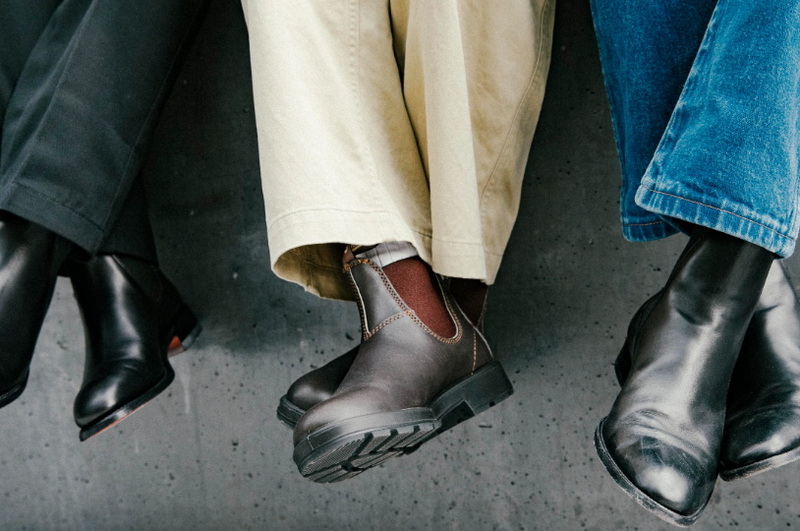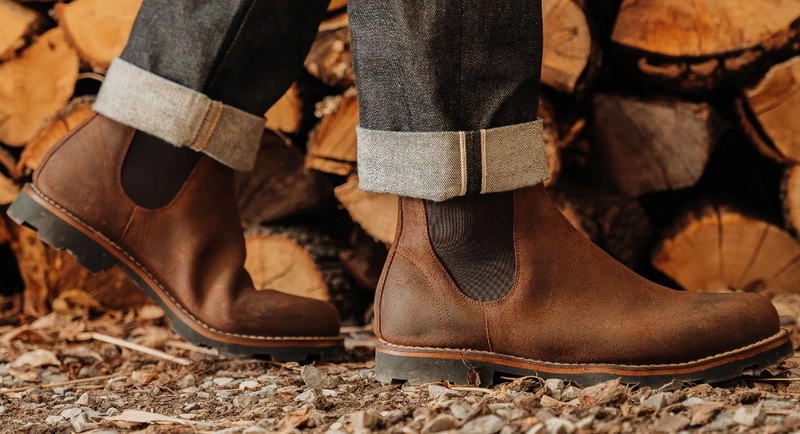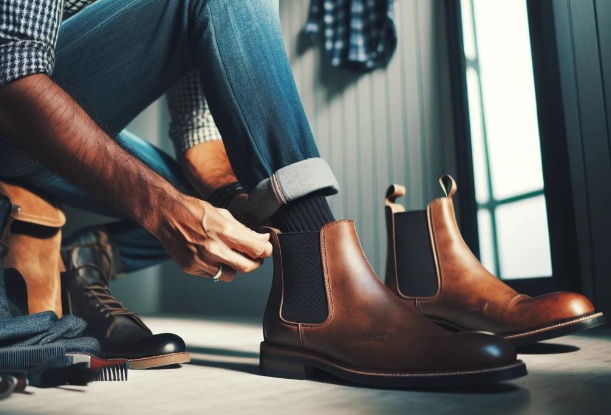Content Menu
● Introduction to European Shoe Sizes
● Comparison with US and UK Shoe Sizes
>> US Shoe Sizes
>>> Table: US to European Shoe Size Conversion for Women
>> UK Shoe Sizes
>>> Table: UK to European Shoe Size Conversion for Men
● How to Measure Your Foot for the Right Size
● Understanding the Mondopoint System
>> How to Use the Mondopoint System
● Differences Between Brands
● The Importance of Accurate Sizing
● Challenges in Converting Sizes
● Impact on Consumers
● Future of Shoe Sizing
● Conclusion
● FAQ
>> 1. What is the European Shoe Size System Based On?
>> 2. Are European Shoe Sizes Unisex?
>> 3. How Do US and UK Shoe Sizes Compare to European Sizes?
>> 4. How Do I Measure My Foot for the Right Shoe Size?
>> 5. Why Is It Important to Find the Right Shoe Size?
● Citations:
European shoe sizes are often considered unisex, meaning that the same numerical size applies to both men and women. However, there are nuances in how these sizes translate across different regions and brands. This article will delve into the specifics of European shoe sizing, comparing it with US and UK systems, and explore how these differences impact consumers.

Introduction to European Shoe Sizes
European shoe sizes are based on the Paris Point system, where each size increment represents two-thirds of a centimeter. This system is used across many countries, including those outside of Europe, such as Israel and New Zealand. Unlike the US and UK, where men's and women's sizes often differ, European sizes are generally unisex, with a size 43 being the same for both men and women.
Comparison with US and UK Shoe Sizes
US Shoe Sizes
In the US, men's shoe sizes are typically one size larger than women's. For example, a US men's size 9 is equivalent to a US women's size 10. The US system also includes various width options, such as narrow, medium, wide, and extra-wide. This variety in widths can make it challenging to find the perfect fit when converting from European sizes.
Table: US to European Shoe Size Conversion for Women
| US Size | Inches | Europe | UK |
| 4 | 8 3/16 | 35 | 2 |
| 4.5 | 8 3/8 | 35 | 2.5 |
| 5 | 8 1/2 | 35/36 | 3 |
| 5.5 | 8 3/4 | 36 | 3.5 |
| 6 | 8 7/8 | 36/37 | 4 |
| 6.5 | 9 1/16 | 37 | 4.5 |
| 7 | 9 1/4 | 37/38 | 5 |
| 7.5 | 9 3/8 | 38 | 5.5 |
| 8 | 9 1/2 | 38/39 | 6 |
| 8.5 | 9 11/16 | 39 | 6.5 |
| 9 | 9 7/8 | 39/40 | 7 |
| 9.5 | 10 | 40 | 7.5 |
| 10 | 10 3/16 | 40/41 | 8 |
| 10.5 | 10 5/16 | 41 | 8.5 |
| 11 | 10 1/2 | 41/42 | 9 |
| 11.5 | 10 11/16 | 42 | 9.5 |
| 12 | 10 7/8 | 42/43 | 10 |
| 13 | 11 1/4 | 43 | 11 |
| 14 | 11 5/8 | 43/44 | 12 |
| 15 | 12 | 44 | 13 |
| 16 | 12 1/4 | 44/45 | 14 |
UK Shoe Sizes
UK shoe sizes are similar to US sizes but start counting from a different point. A UK men's size is typically one size smaller than the US size. For example, a UK men's size 9 is equivalent to a US men's size 10.
Table: UK to European Shoe Size Conversion for Men
| UK Size | EU Size | Foot Length (cm) |
| 6 | 39 | 24.1 |
| 6.5 | 39 | 24.4 |
| 7 | 40 | 24.8 |
| 7.5 | 40/41 | 25.4 |
| 8 | 41 | 25.7 |
| 8.5 | 41/42 | 26 |
| 9 | 42 | 26.7 |
| 9.5 | 42/43 | 27 |
| 10 | 43 | 27.3 |
| 10.5 | 43/44 | 27.9 |
| 11 | 44 | 28.3 |
| 11.5 | 44/45 | 28.6 |
| 12 | 45 | 29.4 |
| 13 | 46 | 30.2 |
| 14 | 47 | 31 |
| 15 | 48 | 31.8 |
| 16 | 49 | 32.5 |
How to Measure Your Foot for the Right Size
Measuring your foot accurately is crucial to finding the perfect shoe size. Here's a step-by-step guide:
1. Place a Piece of Paper on the Floor: Stand on the paper with your heel against a wall.
2. Mark the Length: Have someone mark the tip of your longest toe and the back of your heel.
3. Measure the Length: Use a ruler to measure the length from the heel to the toe.
4. Compare with Size Charts: Match your measurement with the size charts provided by shoe brands.

Understanding the Mondopoint System
The Mondopoint system is another method used for shoe sizing, which measures the internal length of the shoe in centimeters. This system is more precise than traditional sizing systems, as it directly correlates with the foot's length. However, some brands may add extra space for comfort, so it's essential to consult the brand's size guide.
How to Use the Mondopoint System
1. Measure Your Foot Length: Use a ruler or tape measure to measure from the back of your heel to the tip of your longest toe.
2. Match with the Mondopoint Chart: Find the corresponding shoe size based on your foot length.
Differences Between Brands
While European shoe sizes are standardized, variations can occur between brands due to differences in shoe width and design. Some brands may offer wider or narrower options, which can affect the fit. Always check the specific brand's size guide when purchasing shoes, especially online.
The Importance of Accurate Sizing
Finding the right shoe size is crucial for comfort and foot health. Ill-fitting shoes can lead to discomfort, blisters, and even long-term foot problems. Accurate sizing ensures that your shoes provide adequate support and space for your feet, reducing the risk of these issues.
Challenges in Converting Sizes
Converting shoe sizes between regions can be challenging due to the different measurement systems used. For example, converting from European sizes to US or UK sizes often requires approximation, as the increments and starting points differ. This can lead to confusion when shopping across different markets.
Impact on Consumers
For consumers, understanding these differences is essential for finding the right fit. Whether shopping online or in-store, knowing your size in multiple systems can save time and ensure comfort. It also helps in avoiding returns and exchanges due to size mismatches.
Future of Shoe Sizing
As technology advances, there is a growing trend towards more personalized shoe sizing. Some brands are using 3D scanning to create custom-fit shoes, which could revolutionize the industry by eliminating size discrepancies.
Conclusion
European shoe sizes are generally unisex, making them simpler to navigate compared to US and UK systems. However, understanding the differences between these systems is essential for finding the right fit. Whether shopping online or in-store, knowing your size in multiple systems can save time and ensure comfort.

FAQ
1. What is the European Shoe Size System Based On?
The European shoe size system is based on the Paris Point system, where each size increment represents two-thirds of a centimeter.
2. Are European Shoe Sizes Unisex?
Yes, European shoe sizes are generally unisex, meaning the same numerical size applies to both men and women.
3. How Do US and UK Shoe Sizes Compare to European Sizes?
US and UK shoe sizes differ from European sizes. US sizes typically offer more width options, while UK sizes start counting from a different point, making them slightly smaller than US sizes.
4. How Do I Measure My Foot for the Right Shoe Size?
To measure your foot, place a piece of paper on the floor, stand with your heel against a wall, mark the tip of your longest toe and the back of your heel, and then measure the length.
5. Why Is It Important to Find the Right Shoe Size?
Finding the right shoe size is crucial for comfort and foot health. Ill-fitting shoes can lead to discomfort and long-term foot problems.
Citations:
[1] https://crocodileshoes.eu/blog/shoe-size-chart-for-women-men-and-kids-your-complete-guide-671/
[2] https://www.beggshoes.com/blog/eu-shoe-size-to-uk/
[3] https://www.linkedin.com/pulse/mens-shoe-size-conversion-measurement-guide-uk-europe-anwar-phd-qilif
[4] https://www.asics.com/gb/en-gb/content-landing-pages/shoe-size-guide/
[5] https://farada.ae/blogs/news/shoe-size-chart
[6] https://barefootrunreview.com/understanding-shoe-sizing-systems/
[7] https://brogue.ch/size-guide/
[8] https://www.yournextshoes.com/eu-us-shoe-sizes-conversion/
[9] https://www.famousfootwear.com/shoe-size-charts
[10] https://www.size.ly/conversion-charts/international-shoe-size-conversion-chart-women-men
[11] https://www.nike.com/a/how-to-measure-foot-size
[12] https://www.reddit.com/r/Ultralight/comments/o0bimr/ukus_shoe_sizing_weirdness/
[13] https://www.emp.co.uk/sizes/sizes-shoes.html
[14] https://www.rogersonshoes.com/size-guide-i9
[15] http://www.agleathers.com/shoe-guide/shoe-sizes/
[16] https://www.zappos.com/c/shoe-size-conversion
[17] https://www.asos.com/discover/size-charts/men/shoes/
[18] https://www.healthline.com/health/average-shoe-size-for-men
[19] https://rcj.org/en/bebcdrshop/article/european-shoe-size-chart
[20] https://pepalondon.com/pages/childrens-shoe-size-guide-chart

















